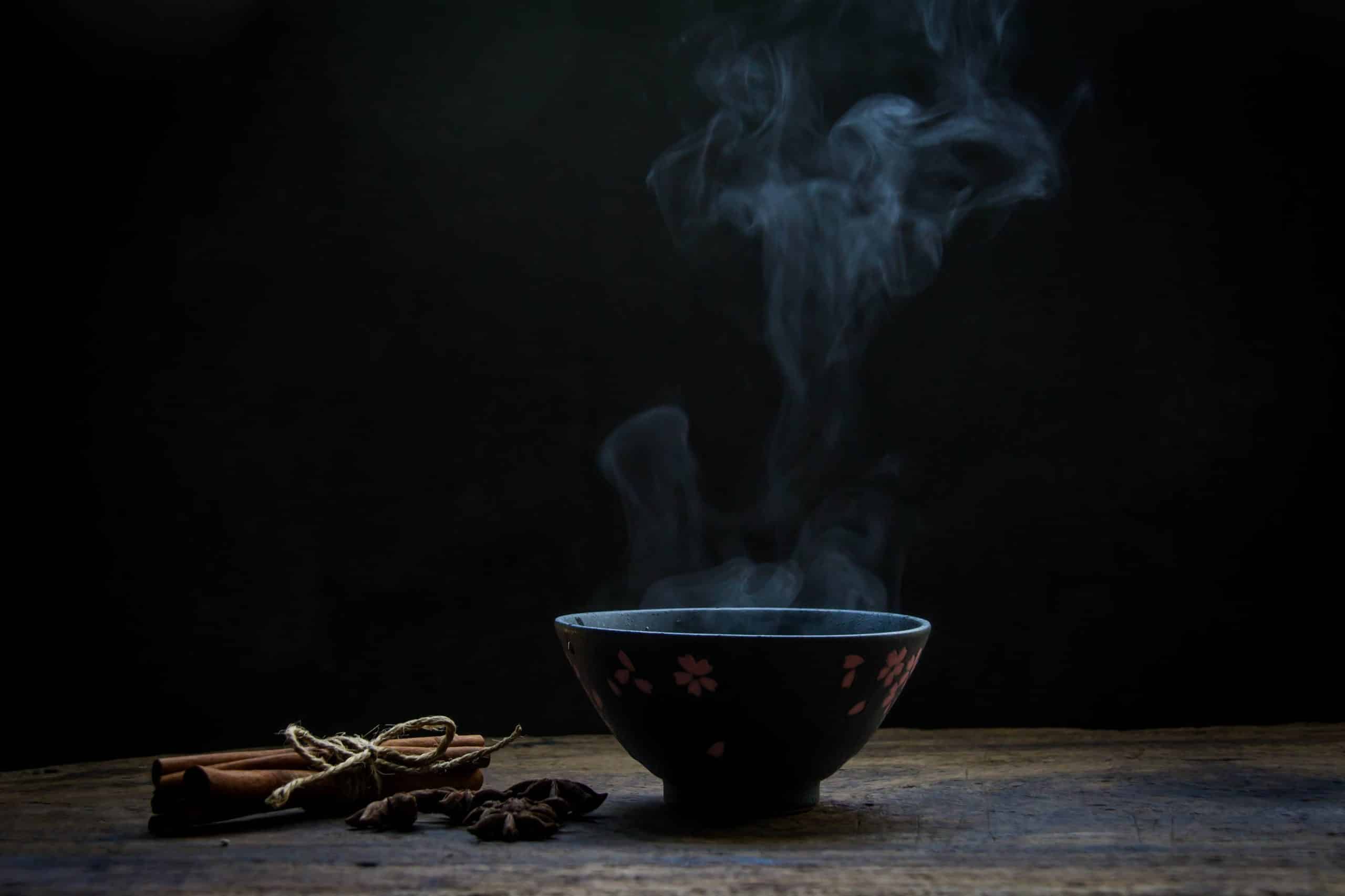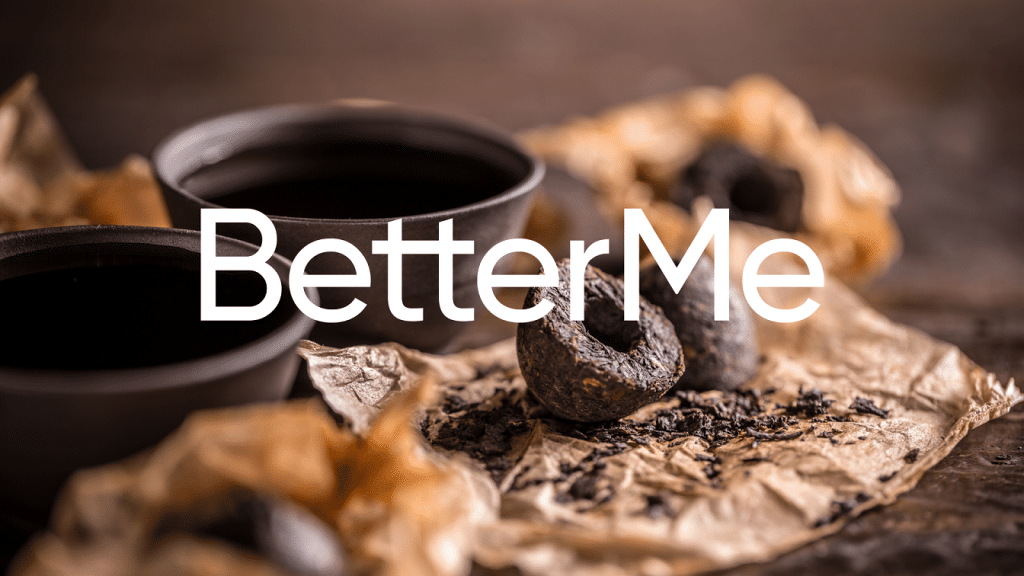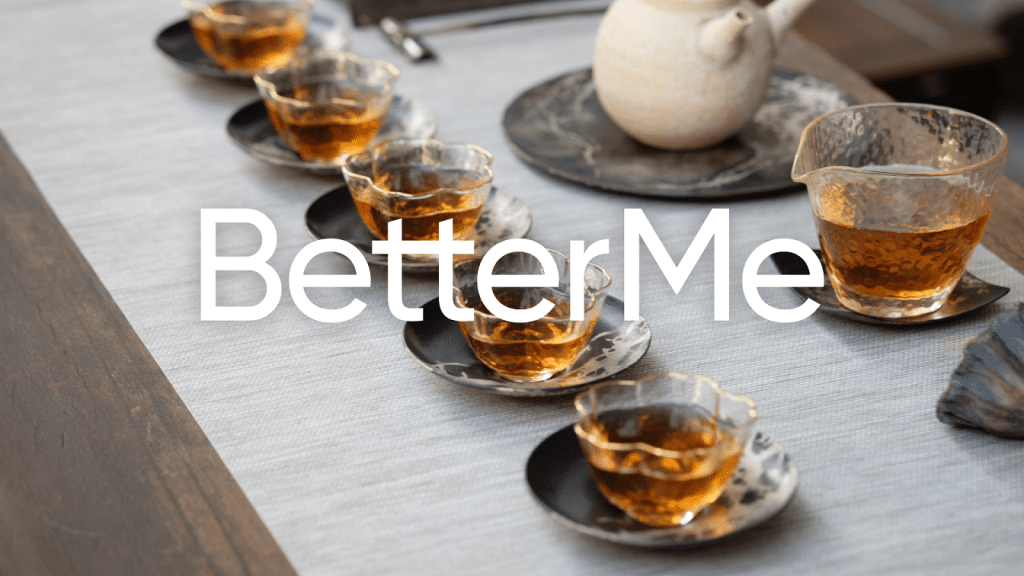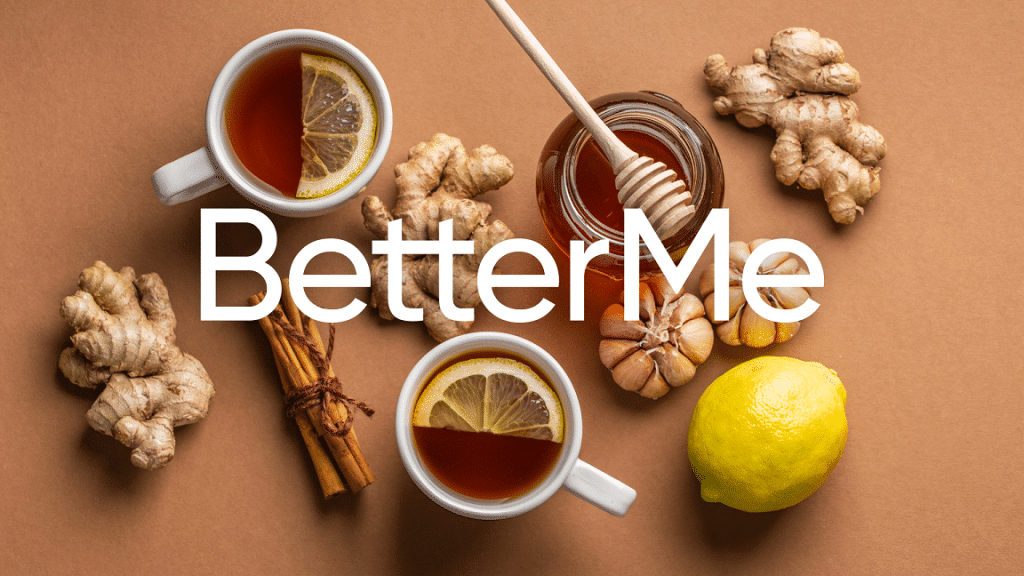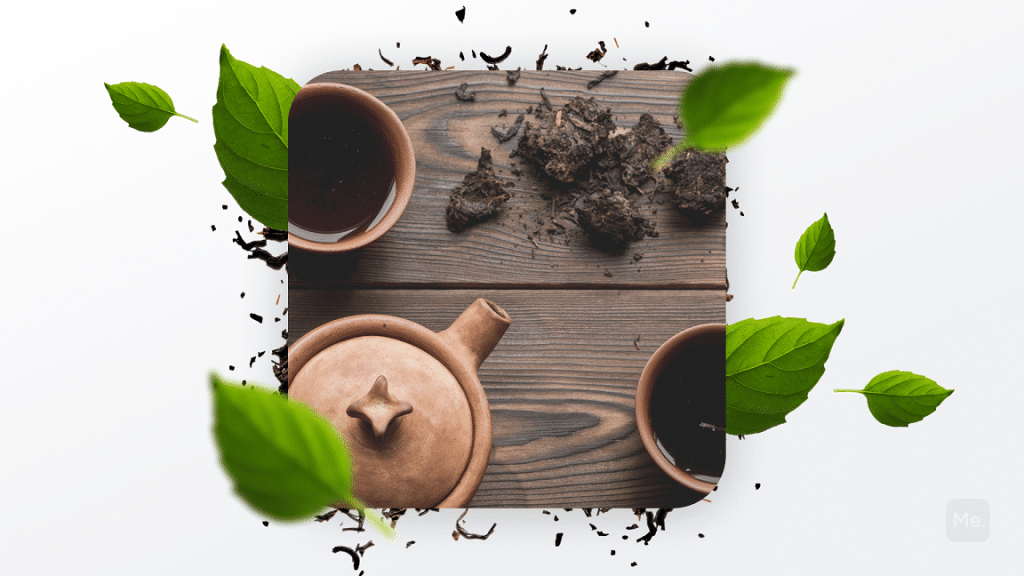Tea is one of the most widely consumed beverages in the world. This “king of drinks” status can be attributed to several reasons, ranging from its flavor to its potentially numerous health benefits. Over time we’ve come to understand that the different categories of tea – black, oolong, green, yellow, white and dark – each have something unique to offer. In this article, we explore the intrigues of dark tea, and answer the questions: What is dark tea and why is it so important?
What Is Chinese Dark Tea?
All 6 types of tea get their unique appearance from how they are cured and the stage at which they are cured. These range from green tea made from fresh tea leaves to the black tea made from post-fermented tea leaves. Dark tea belongs to the latter category.
Dark tea is stored for a long time, sometimes even running into several years and is sold in brick or cake style. This signature packing method is why people often need small knives to help in making this tea. Over the fermentation period, several diverse microorganisms interact with the leaves leading to the constant change and improvement of the tea’s flavor. This process is often referred to as aging.
The characteristic unique flavor of dark tea is one of the properties that has gained it lots of fans globally. Unlike its counterparts, dark tea does not have an astringent taste or vegetal smell. In fact, you may not even think it’s tea when you first try it!
When brewed, dark tea takes an amber appearance alongside a richness to complement its mellow, smooth and unique sweetness. This addicting taste has led to people referring to it as the “aging flavor”.
How Is Dark Tea Made?
Dark tea is made in 2 major stages: Primary and Further processing. Piling – which distinguishes dark tea from other tea types – is the most important step and it occurs in the primary stage.
Now, reproducing things that are the result of accidental events is not always easy. Dark tea fits into this category and as a result tea masters have conducted lots of tests to determine the best way to mass produce it. These tests involved simulating the worst environmental conditions and eventually piling was developed.
Tea leaves are fixed and rolled before being placed on the ground in a warehouse. During this time, the leaves are not exposed to sunshine and temperatures are regulated at 25 degrees C. Additionally, the humidity is maintained at 85% and the tea piles watered at specific intervals.
The humidity and high temperatures in the warehouse trigger a series of chemical reactions that form dark tea. For starters, the residual active enzymes oxidize the tea polyphenols, changing them into other substances. These changes are what tones down the bitter taste of the tea, while the increase of polysaccharides improves sweetness.
Several microorganisms also aid in fermentation, making the process move faster and more efficiently. Lastly, as a result of chlorophyll being broken down, the leaves become dark.
Read More: Black Tea Facts, Health Benefits And Side Effects
Types Of Dark Tea
There are different types of dark tea grown in China, resulting in several varieties. The factors that determine the final form of dark tea range from how it is grown to how it is processed. Here are some of the different types of dark tea you need to know about:
Fuzhuan Brick Tea
This variety is indegnious to Jingyang, Shaanxi region where there is little to no tea tree growth. As a result, most of the tea leaves have to be sourced from other regions like Anhua.
This tea is mainly characterized by tiny golden flowers found inside it. These flowers are as a result of a specific type of fungus that are thought to be beneficial for your health.
To stimulate the growth of these flowers, the bricks are not compressed too tightly. The form should be loose enough that you could pry them apart with your hands.
Anhua Dark Tea
This tea is primarily grown in the Hunan region from tea trees with large leaves. The leaves were traditionally packaged by compressing the tea leaves in a long bamboo cane.
Pu-Erh Tea
This is arguably the most popular variety of dark tea. Its characteristic strong flavor is linked to the Yunnan large leaf tea tree from which it is brewed. Pu-er dark tea is sold in several shapes including the brick and cake style, tuo cha and mushroom cha.
Dark Tea Nutrition
Have you ever wondered what makes dark tea special? Perhaps you’re asking yourself what are the health benefits dark tea can bring to you. Here are some of the top potential health benefits of dark tea backed by science:
Polysaccharides
These are the primary beneficial compounds of dark tea. Tea polysaccharides are a type of acid glycoproteins that combine with several minerals. The polysaccharides usually develop with the dark tea in it’s aging phase meaning the longer it takes, the more content it gets.
Saponins
Tea saponins are a special type of glycosides found known for their potential to reduce cholesterol levels (4). Apart from that, tea saponins will help create some foam while you brew the tea.
Caffeine
All types of tea contain a certain amount of caffeine. Oxidized teas like black tea and dark tea typically have more caffeine than non-oxidized types such as green and white teas. However, when dark tea is aged for a long time, the caffeine starts to slowly break down. So a dark tea that has been aged for several years will probably contain less caffeine than one that has only been aged for a few years. But they all contain some amount of caffeine.
Microorganisms
Most of the microbiota in dark tea are as a result of the piling process. Some of them include molds, actinomycetes, lactic acid bacteria and saccharomycetes. These bacteria help develop the unique flavor of the tea in addition to providing possible health benefits like improving your gut health (3).
Amino Acid
Recent studies have shown that dark tea contains gamma aminobutyric acid (GABA). Further research is still needed to establish whether these amino acids are from microorganism metabolism or tea processing. GABA is a chemical that is made in the brain and has anti-seizure and anti-anxiety effects, but it is not clear whether GABA taken by mouth or obtained from the diet is able to cross the blood brain barrier, which it would need to do to have any effect in the brain.
Pigments
Theaflavin and thearubigins are the primary tea pigments found in dark tea. These two pigments have lots of potential health benefits and are also responsible for the amber color in dark tea.
Looking for a way to break the vicious cycle of weight loss and tone up all the jiggly parts? Watch the extra pounds fly off and your muscles firm up with the BetterMe app!
Health Benefits Of Dark Tea
Here are some of the potential health benefits of taking dark tea:
Improves Digestion
The caffeine content in dark tea has been shown to stimulate gastric juice production which may in turn improve digestion, however too much can be irritating to the GI tract (1). Additionally, several ingredients in dark tea may aid in the growth of beneficial gut bacteria that play a key role in improving the health of your digestive system (3).
Contains Antioxidant And Anticancer Properties
Like other types of tea, dark tea contains polyphenols like catechins, flavonoids and tea pigments. These compounds are powerful antioxidants that actively fight free radicals, while possibly slowing down aging and improving skin health (5).
Lowers Blood Pressure
Dark tea contains theanine that has been shown to possibly help in the regulation of blood pressure. This compound may activate dopaminergic neurons which then prevents blood pressure from rising. Other compounds like tea polyphenols have also been shown by several studies to potentially help lower blood pressure (5).
Weight Management
Some preliminary studies conducted in Asia indicated that there was a decrease in fat levels after the subjects consumed dark tea over some time. Additionally, other properties of dark tea, like its low calorie count make it an excellent addition in a weight management diet (2).
Lowers Cholesterol Levels In Your Blood
Excess fat and lipid content in the blood can lead to cardiovascular diseases that can be fatal. Dark tea contains high quantities of tea polysaccharides that affect lipid metabolism in ways that may lower your blood levels of triglycerides and LDL cholesterol, in turn lowering the risk of cardiovascular diseases (5).
Read More: Sencha Tea Facts, Health Benefits And Side Effects
How To Brew Dark Tea
Here are some of the methods you can use in brewing dark tea to bring out its best flavor:
Method 1
- Start by preheating your teaware then add in the tea leaves.
- Meanwhile, boil some water in a separate saucepan then add it to the teaware containing the leaves. Let this steep for about 10 seconds then pour out the waste water.
- Again fill it with more hot water and allow the tea to steep for about 1 to 2 minutes.
- Serve and enjoy
Method 2
- Start by preparing a cast iron teapot then fill it with water to the 3/5th level. Heat until it boils.
- Add in the tea leaves and allow it to cook for about 5 to 10 minutes.
- Serve hot and enjoy.
If you tend to let yourself off the hook, raise the white flag when things get tougher than you expected, send yourself on an unconscious binge-eating trip – BetterMe app is here to help you leave all of these sabotaging habits in the past!
Conclusion
Dark tea is an ancient type of tea that comes with lots of possible health benefits including: lowered risk of cardiovascular diseases, improved digestion, blood pressure regulation and anticancer properties. The bonus? This tea has a rich flavor without the astringent taste that comes with other types of tea.
Get your personalized
meal plan!
DISCLAIMER:
This article is intended for general informational purposes only and does not serve to address individual circumstances. It is not a substitute for professional advice or help and should not be relied on for making any kind of decision-making. Any action taken as a direct or indirect result of the information in this article is entirely at your own risk and is your sole responsibility.
BetterMe, its content staff, and its medical advisors accept no responsibility for inaccuracies, errors, misstatements, inconsistencies, or omissions and specifically disclaim any liability, loss or risk, personal, professional or otherwise, which may be incurred as a consequence, directly or indirectly, of the use and/or application of any content.
You should always seek the advice of your physician or other qualified health provider with any questions you may have regarding a medical condition or your specific situation. Never disregard professional medical advice or delay seeking it because of BetterMe content. If you suspect or think you may have a medical emergency, call your doctor.
SOURCES:
- Could More Coffee Bring a Healthier Microbiome? (2019, webmd.com)
- Reduction of body fat and improved lipid profile associated with daily consumption of a Puer tea extract in a hyperlipidemic population: a randomized placebo-controlled trial (2016, nih.gov)
- Role of the gut microbiota in nutrition and health (2018, bmj.com)
- Saponins – an overview (n.d., sciencedirect.com)
- Tea and Health: Studies in Humans (2014, nih.gov)
